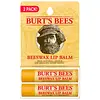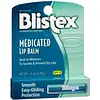What's inside
What's inside
 Key Ingredients
Key Ingredients

 Benefits
Benefits

No benefits
 Concerns
Concerns

 Ingredients Side-by-side
Ingredients Side-by-side

Dimethicone 2%
EmollientEthylhexyl Methoxycinnamate 6.6%
UV AbsorberEthylhexyl Salicylate 4.4%
UV AbsorberBeeswax
Emulsion StabilisingCamphor
MaskingCetyl Alcohol
EmollientCetyl Palmitate
EmollientEuphorbia Cerifera Wax
Aroma
Isopropyl Myristate
EmollientLanolin
EmollientLanolin Oil
EmollientMenthol
MaskingMethyl Salicylate
PerfumingParaffinum Liquidum
EmollientOzokerite
Emulsion StabilisingParaffin
PerfumingPetrolatum
EmollientPhenoxyethanol
PreservativePolybutene
CI 15850
Cosmetic ColorantTheobroma Cacao Seed Butter
EmollientTitanium Dioxide
Cosmetic ColorantDimethicone 2%, Ethylhexyl Methoxycinnamate 6.6%, Ethylhexyl Salicylate 4.4%, Beeswax, Camphor, Cetyl Alcohol, Cetyl Palmitate, Euphorbia Cerifera Wax, Aroma, Isopropyl Myristate, Lanolin, Lanolin Oil, Menthol, Methyl Salicylate, Paraffinum Liquidum, Ozokerite, Paraffin, Petrolatum, Phenoxyethanol, Polybutene, CI 15850, Theobroma Cacao Seed Butter, Titanium Dioxide
 Reviews
Reviews

Ingredients Explained
These ingredients are found in both products.
Ingredients higher up in an ingredient list are typically present in a larger amount.
Lanolin is a wax secreted by animals with wool, such as sheep. It is a waterproof emollient.
Emollients help soften and moisturize the skin by creating a film. This film prevents moisture from escaping, helping the skin stay hydrated.
Unlike true fats, lanolin contains sterol esters instead of glycerides. It also contains fatty acids and alcohols.
Because lanolin comes from an animal, it is not considered vegan. Sheep secrete lanolin through sebaceous glands to help protect their skin from the environment.
The answer to this question depends on the brand itself. Being cruelty-free means a brand does not experiment or harm animals. We recommend looking into how brands source their lanolin. Lanolin is cruelty-free if it is gathered without harming the animal.
Learn more about Lanolin